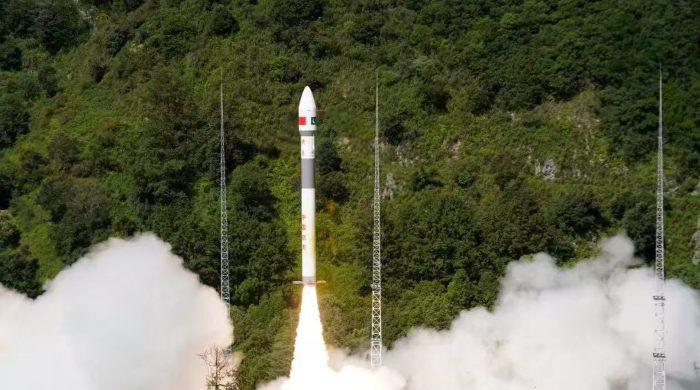- Satellite was launched from the Chinese Xichang installation.
- Fifth Pakistani satellite now active in orbit.
- Ahsan Iqbal rents Suparco, the support of China.
Karachi: Pakistan has successfully launched its latest remote sensing satellite in the Chinese Xichang Satellite launch center (XSLC), said the space research commission on Thursday and the atmosphere UPT (Suparco), marking an important stage in the country’s growth space program.
According to a spokesperson for the National Space Agency, the new satellite should support national capacities in the observation of the land, agricultural surveillance and environmental analysis.
The satellite will also contribute to geospatial and monitoring strategic initiatives such as the Chinese-Pakistani Economic Corridor (CPEC), aid to regional planning and supports efforts to manage natural resources.
The Suparco spokesperson added that the satellite will help identify transport networks and geographic risks.
According to the agency, this is the second remote sensation satellite of Pakistan after the PRS-1, which was launched in 2018. With the addition of the new satellite, five Pakistani satellites are now operational in orbit, strengthening national capacity in space surveillance and disaster management.
The launch is part of the national space policy and the broader vision of Pakistan 2047. According to Suparco, the new satellite is equipped with advanced imaging systems and will help predict and attenuation of natural disasters, including floods, earthquakes, landslides and a merger of GLSES.
Suparco has said that satellite is equipped with advanced imaging systems designed to facilitate precision agriculture, response to disasters, town planning and climate surveillance.
The Federal Minister of Planning Ahsan Iqbal congratulated the nation for the successful launch and praised the team, engineers and scientists of Suparco for their realization. Iqbal said the satellite managed to reach his orbit and had expressed his gratitude for the strong support of China to make the mission possible.
In a message shared on X, Iqbal described the launch as “another Uraan from Pakistan”, and said “another proud moment for our nation”. He declared that the mission reflects the “dedication and excellence of Suparco and its brilliant team” and affirmed that the milestone “reinforces not only the capacities of Pakistan in space exploration, but also takes Pakistan – China Iron Brotherhood beyond the sky.”
He also said that Pakistan would restore its leadership role in space technology and revealed that next year, with Chinese assistance, a Pakistani astronaut would be sent to space. Iqbal also announced that Pakistan aims to successfully complete its program to reach the moon by 2035.
Earlier, Suparco had declared that satellite would play a central role in sustainable development by improving resources management, supporting precision agriculture and facilitating urban and regional planning.
The mission is based over a decade of progress since the 2011 launch of Paksat-1R, followed by Paktes-1A and PRS-1 in 2018. In 2024, the country reached another important step with the launch of Paksat-MM1, offering broadband Internet to distant areas.
The first lunar satellite built by Pakistan students, Icube Qamar, also made the headlines of the world newspapers with its images of the surface of the Moon.
More recently, in January 2025, Pakistan launched its first entirely native satellite, EO-1 electro-optical satellite, entirely developed by local engineers and scientists, designed for agriculture, disaster monitoring and environmental analysis.




